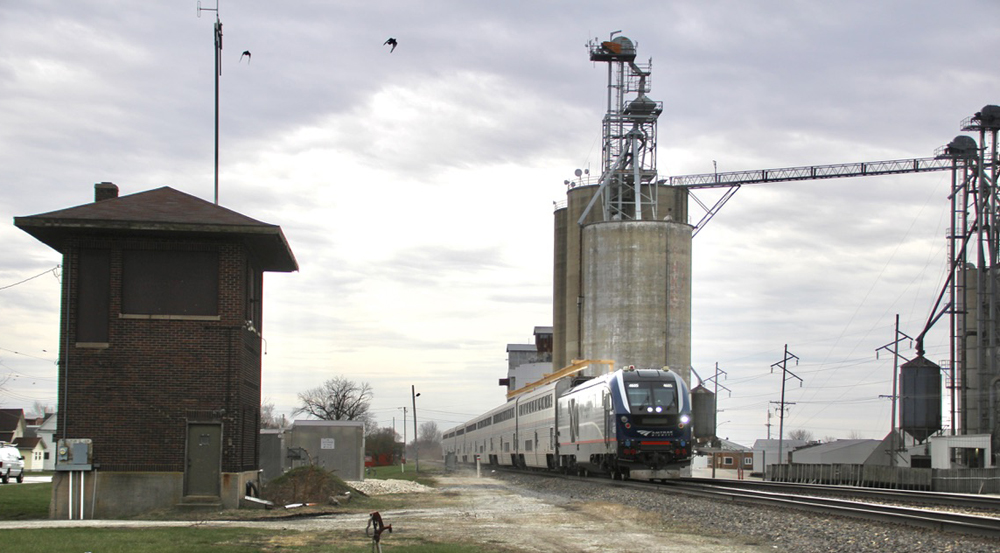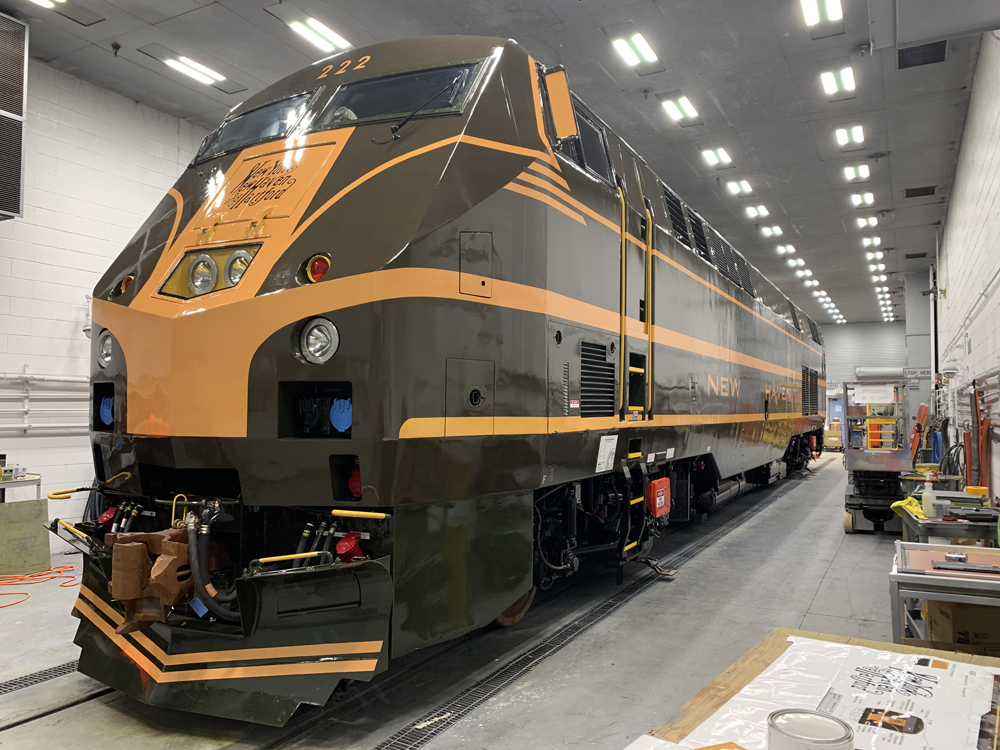– Unnamed railroad official, cited in a January 1920 Railway Age article summarizing a U.S. Railroad Administration report on women in the workforce.
Nearly a century later, women are still trying to climb the ladder in the male-dominated railroad industry.
A stubborn gender gap persists in top management ranks at Class I railroads. And railroads slightly lag other large companies in the percentage of women who hold top executive positions. By how much depends on the survey and the definition of executive.
Some 22 percent of the senior-level executives at the seven big railroads are women, according to a Trains News Wire review of the corporate leadership pages on their respective websites. That’s slightly below the 25 percent of women who hold executive and senior-level positions at S&P 500 companies, according to Catalyst, an advocacy group that tracks workplace inclusion.
The percentage of women declines when measured by C-suite positions, those at the executive vice president level and above, whose titles generally include “chief.” Only 18 percent of C-suite positions at the Class I railroads are held by women, versus 19 percent in the LeanIn.org and McKinsey & Co. Women in the Workplace Study 2016, which surveyed 132 companies.
And none of the Class I railroads has a woman as its chief executive, compared to 5.8 percent of companies in the S&P 500, according to Catalyst.
Perhaps the numbers shouldn’t come as a surprise. Women make up less than 10 percent of the Class I railroad workforce, versus 44 percent in S&P 500 companies.
The two biggest obstacles to having more women in the executive suite are the lack of women in field operations and cultural bias in even the most well-intentioned male executives, says retired railroad executive Kathryn McQuade.
McQuade has a unique perspective on women and railroads: She served in C-suite positions at both Norfolk Southern and Canadian Pacific. McQuade was chief information officer and executive vice president of planning at NS from 2004 to 2007. She then became chief operating officer at CP, before serving as its chief financial officer from 2008 through 2012.
During three decades in the industry, McQuade witnessed both progress and positive trends for women who wanted to climb the corporate ladder. Yet much remains to be done. “When I retired I said, ‘I can’t believe it hasn’t changed more in that period of time.’ “
McQuade recalls her first days on the job at Norfolk & Western in the 1970s.
“The first thing I did was say that I wanted to have a job in the field,” she says. “They said, ‘Absolutely not. We don’t have women out in the field.’ ”
Today that’s changed. But there are still relatively few women working in field operations — the male-dominated jobs that typically have no set schedules, require time away from home, and often don’t appeal to women.
“It’s tough for women in the railroad industry,” McQuade says. It’s really hard for women to get operating experience. And so it ends up limiting females in their overall value to railroads.”
It’s no coincidence that the women who are top executives at the Class I railroads are in financial, legal, and marketing positions rather than operations. (The lone exception is Cindy Sanborn, who is chief operating officer at CSX Transportation.) This is not unique to railroads. In big companies women tend to fill executive support roles, the McKinsey study notes.
While at NS, McQuade was among the founders of a support network for women railroaders. WiNS, as the group is called, was started in 2004 to impart leadership skills, attract and retain women in management roles, and provide members with access to career development resources.
An almost invisible barrier that women have to overcome on their way to the executive suite is cultural bias. Most men are hard-wired to be overprotective of women and are reluctant to promote them to roles where they might fail, McQuade contends. This leads to women getting fewer opportunities to prove themselves and to get promoted to the highest levels.
“You have to make an effort to put women in positions where they can fail,” McQuade says. “And that’s why it has to become a priority of the CEO.”
McQuade credits former CSX CEO Michael Ward and former NS CEO David Goode for putting women in decision-making roles.
All of the Class Is say they value workplace diversity and are committed to increasing the number of women in the workforce as well as in management positions.
“From a business perspective, diversity improves the company’s decision making, problem solving, and strategic thinking, which translates into a competitive advantage with bottom-line results,” Union Pacific CEO Lance Fritz says in the railroad’s sustainability report.
“We’re better as a company when we have women involved in our operations because of the diversity of views and experience,” Mike Wheeler, chief operating officer at Norfolk Southern, says in the railroad’s sustainability report.
“So many of our sons follow in our footsteps at the railroad,” Wheeler said at the railroad’s Lead It summit last year. “We need to find ways for our daughters to want to follow us here, too.”
Railroads are taking steps to attract women to the industry.
Canadian National recently was named one of Canada’s Best Diversity Employers for 2017 for its internship program that provides women with exposure to transportation, mechanical, engineering, and intermodal careers. And this month it held a Women in Rail webcast to recruit new supervisors and entry-level managers.
UP aims to recruit women to science, technology, engineering, and math-related careers at the railroad and supports programs such as the University of Nebraska’s Women in IT Initiative. It also has a program designed to foster opportunities for women to be recruited, retained, and advanced in the company.
Canadian Pacific, which no longer has any women at the vice president level or above, “is committed to increasing diversity throughout the company,” spokeswoman Salem Woodrow says. “This includes striving to maintain and increase diversity at the Board level through to our executives, senior management and employees. Women currently represent 40 percent of CP’s directors, including the chairs of the Compensation Committee and the Governance Committee.”














If a woman wants to be in a railroad operating position, why shouldn’t she? If I ran a railroad, my feeling is if she (or anyone, for that matter) can do the job, let her! She may do a better job than some men could. Oh, and compensate her at THE SAME RATE as men!
Breaking through the steel rail ceiling!
Jerry Conaway – right on!!
Large fingers, little phone. Corrections as follows…
How about stop worrying about what color they are are or what they have between their legs and give them a test that is geared towards the job they are going to have to do. The man/woman/white/black/hispanic/asian/whatever who scores the highest on the test gets the job. The tests would be audited by a third party company. End of story, no discrimination, neopotism, or cromyism required. If you didn’t get the job, it truly would be your own fault, try harder next time.
How about stop worrying about what color they are are ir what they have between their legs and give them a test that is geared towards the job thebare going to have to. The man/woman/white/black/hispanic/asian/whatever who scores the highest on the test gets the job. End of story, no discrimination,neopotism, or cromyism required.
Perhaps encouraging girls to read “Atlas Shrugged” might convince some of them to become future Dagny Taggarts. (Of course, encouraging anyone and everyone to read “Atlas Shrugged” could have all sorts of positive outcomes. Personally, my favorite character is Ragnar Danneskjold.)
Could be that men and women are just different and have different ambitions and aspirations?
Nursing is an excellent career, and overwhelmingly dominated by women-yet there are no committees of nurses getting together and saying silly virtue-signalling things like “we need to find ways for our daughters to want to follow us here, too.”
The Transit/Commuter side of things seems to be providing a broader field of opportunity for women. I say “seems” as I cannot claim any extensive research, only personal experience. At one west coast operation, the top operating and engineering people are both women.
One can argue, if they were want to be picky or just contrary, that Transit/Commuter is not “real” railroading. However, this is where a great deal of new construction is being done and leading such work (notice I did not say managing) takes determination, smarts, long hours and commitment with a slight advantage that the property is usually not terribly wide spread so being home is less of an issue that it could be on a Class 1.
This is not to say that the atmosphere of “paternalism” does not exist. I personally witnessed one highly qualified woman being refused a key promotion because the boss (male of course) “didn’t want to put her in a position where she might fail”. The upshot of that was the agency lost her services shortly thereafter when she took a job with the city.
The next layer to look more closely at would be the consulting side, who are more and more the real working staff of Class 1’s, especially in engineering disciplines. Again, just by my own observation, there “seems” to be a better representation at all levels by women.
So women “seem” to be working more and more in the industry as a whole. Just need to look beyond the strictly Class 1 employment figures. It’s like when I went back to college to finish my engineering degree after working for a Class 1 for 5 years. Two things had changed (this will really date me) There were electronic hand held calculators instead of slide rules and there were women in the engineering classes.
If there are not enough women the question begs: Why didn’t or doesn’t the “weaker sex” start and build its own railroads? They are that capable after all………right?
Another siren call for cultural change. Why yes missy of course. If women want these kinds of opportunities then they need to adapt to the needs of the employers. I.e. Long hours, frustrated goals, frequent reassignment and having the kids call the nanny “mom”. It’s not for everyone and women even less so due to the “culture ” of the job. Want to be home every night and weekend. Want to see your kids grow up? Maybe not for you…